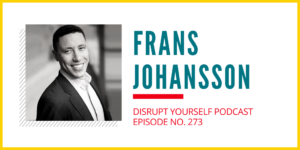“I’m thinking about quitting my job.”
That’s what one of our coaching clients said recently.
“Why,” I asked.
“I like the work,” she said, “But it’s just not feeling good to me here.”
Here’s the context:
For several years, this client worked in a highly toxic environment. She was repeatedly told she was doing a lousy job. Not bad enough to let her go, but….
You know, that kind of job.
But she stayed, as people often do –– financial exigencies –– because sometimes, confidence erodes in an emotionally abusive situation, and it’s hard to look for another job.
Finally, she found the wherewithal to look. Her new job is at a name-brand company, with a manager and colleagues she likes, and the ability to work remotely.
Which can be a really good thing, but in this particular situation, it’s not.
There’s a lot of talk about how we manage people’s performance. But I’d like to flip this: how do we manage people so that they can perform? Be their best and bring their best? This is where the S Curve can be of service. It provides a tool for conversations about people’s growth—yours and theirs. Where are you, where are you headed, and what will help get you there? It’s a simple visual model that facilitates sometimes awkward or difficult conversations.
In my client’s case, she needs information to grow. She’s not getting it. There’s an inadequate connection to her boss and colleagues and little feedback on her performance, positive or negative.
Our brains like certainty. We crave certainty. At the launch point of the S Curve, we don’t have certainty. We need feedback–what isn’t working along with what is. It gives us guardrails and guidance on an unfamiliar path.
For any curve, we need this; coming out of a challenging situation, like my client is, we need it even more.
In a remote environment, feedback is harder to come by. The usual physical cues are obscured. You aren’t with people. You can’t see their faces, their body language. Information has to be made explicit, with actual words.
I didn’t immediately empathize with my client’s dissatisfaction. I was thinking, “I really like Zoomworld.”
But on the same day as this chat with my client, I did one keynote live, and then another keynote virtually.
Doing something virtual right after the live event, I could feel the absence, the lack of information, feedback –– the lack of energy.
For this client, and for many of us, missing feedback fuels insecurity. If insecurity persists, we start to contemplate a job change.
Our new ways of working are a marvel and offer so much more flexibility, but we must consciously complete the feedback loop. It doesn’t happen automatically, nor even readily, when we are working remotely. Check out our earlier podcast, Episode 112, with Marcus Buckingham.
If you check in with your direct reports–close the loop once a week–you increase engagement by 20 percentage points.
Just check in, whether they’re at the top or bottom of their S Curve or seem to be sweetly secure somewhere in between.
I know I could do better.
How about you?
This week we have two podcast episodes. The first features Anne Chow, and her lessons learned as the current CEO of AT&T Business, and her decision to jump to a new S Curve.
The second has Frans Johansson, author of the groundbreaking The Medici Effect, which talks about how magic happens when you put different people, ideas, and perspectives together. You are going to love both interviews.
My best,
Whitney
P.S. Because Amazon likes reviews, everyone who leaves a review of Smart Growth between now and June 15th will be eligible for a raffle for a ½ hour coaching session with me. If you’ve already left a review, invite someone else to leave a review and let me know. You will be eligible for the raffle too. Thanks to Carol Kauffman for this suggestion.



